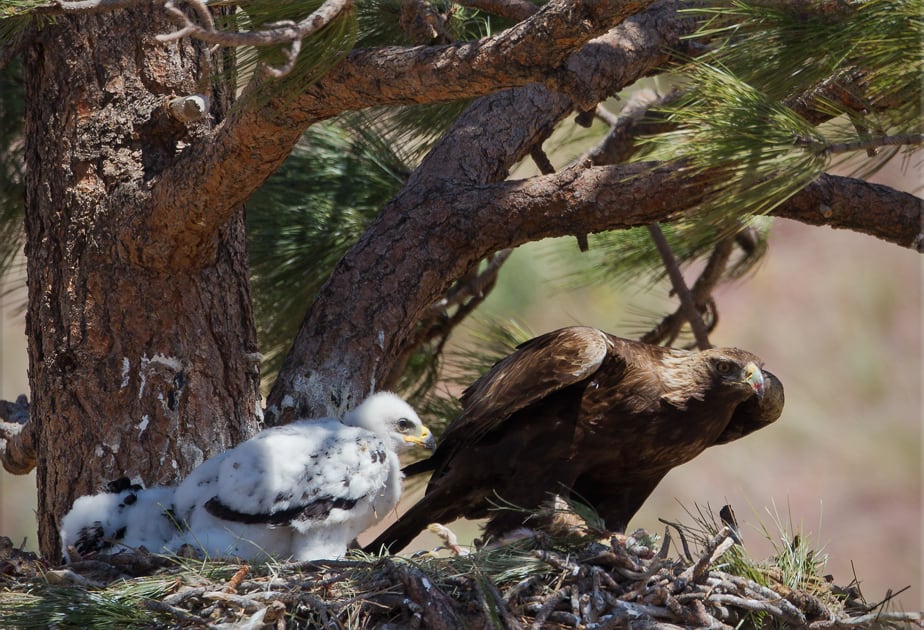- SCIENTIFIC NAME
- Aquila chrysaetos
- CLASSIFICATION
- Bird
- LIFE SPAN
- 15-30 Years
- SIZE
- 33-38” | 6-15lbs
- STATE CONSERVATION STATUS
-
- Priority Species
- State Protected
- FEDERAL CONSERVATION STATUS
- Least Concern
- GAME STATUS
- Non-Game
- GAME TYPE
- None
- Washoe
- Humboldt
- Pershing
- Churchill
- Mineral
- Lyon
- Douglas
- Carson City
- Storey
- Elko
- Lander
- Eureka
- White Pine
- Esmeralda
- Nye
- Lincoln
- Clark
Habitat & Range
Golden Eagles are found throughout Nevada. They prefer open country and hilly and mountainous areas. They can be found in a variety of habitats including deserts, tundra, shrublands, forests, farmland, wetlands, riparian areas, and grasslands.
- Barren Lands
- Cliffs and Canyons
- Cold desert shrubland and sagebrush
Threats
- Habitat Loss
- Lead Poisoning
- Urban Development
Natural History
Golden Eagles are monogamous and may remain with their mate for several years or possibly for life. Pairs maintain territories that may be as large as 60 square miles. Within these territories they will build huge nests to which they may return to year after year. They prefer cliffs as a location to build their nests but have been known to use man-made structures like electric towers and windmills.
The female eagle will lay 1-4 eggs and is also responsible for the majority of incubation. The eggs hatch after about 40 days. After hatching both the male and female, assist with caring for the hatchlings. At about 10 weeks the chicks will start flying, but they will not be independent from their parents for several more weeks.
Golden Eagles are incredibly agile in flight for how large they are. In a dive, they can reach 200 mph. Their flight abilities make them efficient predators. They use their large talons to catch their prey consisting of mostly small mammals like marmots, squirrels, hares, and rabbits. They are also known to catch much larger prey like badgers, deer, coyotes, and cranes.
Fun Facts














